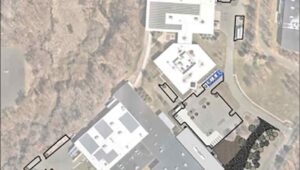Cooling and heating with water-filled windows
5th July 2020
UK: New research suggests water-filled glass could be used to heat and cool structures and save energy in all climates.
Loughborough University’s Dr Matyas Gutai has been researching the idea for more than 10 years and his latest study, published in Elsevier’s Energy and Buildings Journal in collaboration with Dr Abolfazl Kheybari of the University of Kaiserslautern, is said to demonstrate how water-filled glass (WFG) could revolutionise building design and performance
The research is said to show that WFG systems perform well in any inhabited climate – keeping buildings in hot climates cool, and buildings in cool settings warm – without requiring an additional energy supply.
WFG involves a sheet of water trapped between a panel of glass. The water being practically invisible.
Dr Gutai developed the idea into a working design and then created two prototype buildings in different climates – Hungary and Taiwan – that use WFG as part of a larger mechanical system.
The WFG system involves connecting the water-filled window panels to a storage tank using pipes hidden in the walls, so fluid can circulate between the two.

This system allows the so-called water houses to cool and reheat themselves, without needing an additional energy supply for most of the year.
When it is warm, the water absorbs external and internal heat. This warm water is then circulated to the storage tank, which can either be in the foundations or placed somewhere in the building.
If the temperature drops, the heat stored in the tank can be brought back to the walls to reheat the building. Alternatively, the stored heat can be used for hot water supply.
Dr Gutai has also developed a more sophisticated version of the system by adding a heat pump, which can heat and cool the water depending on the season.
Simulation tests using data gathered from the two water houses in 13 different climates found that WFG saved energy in all major inhabited regions (every climate region except polar) with savings of 47%-72% compared to double glass (with low-E) and 34%-61% compared to triple glass.
The simulations are also said to have highlighted that current glass technologies could lead to bigger energy savings if more focus was put on improving solar absorption as opposed to insulation.
“Glass is currently a liability in buildings as it compromises energy consumption, thermal comfort, acoustics and other aspects,” Dr Matyas Gutai commented. “WFG changes this paradigm and turns glass into an opportunity for sustainable construction.
“It shows us that thinking holistically about buildings and building components leads to a more efficient and sustainable built environment.”
Dr Gutai is now looking to develop this technology into a product and is working with colleagues in academia and enterprise to achieve this goal. He is also to build on the research by comparing WFG with dynamic glazing, evaluating life-cycle impact and simulating thermal comfort.







